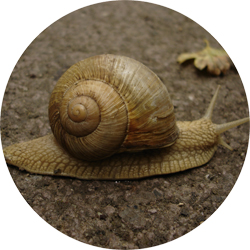Diversity and trait composition of moths respond to land-use intensification in grasslands: generalists replace specialists
by Mangels, J., Fiedler, K., Schneider, F. D., Bluethgen, N.
Published: 20 August 2017
In: Biodiversity and Conservation, 26:3385-3405
doi: 10.1007/s10531-017-1411-z
Abstract
Grasslands belong to the ecologically most relevant habitats in cultural landscapes, but also provide high economic value when used as meadows or pastures. Land-use intensification in grasslands negatively affects plant diversity as well as arthropod communities that depend on plants as food source and habitat, with important consequences for the provision and resilience of ecosystem functioning. In this study, we sampled grassland moth species and investigated whether species composition, diversity and life-history trait characteristics of moth communities respond to the type and intensity of land use, comparing 26 sites in three different regions of Germany. Consistent across the three regions, we found that pastures grazed by cattle, horses or sheep harbour fundamentally different moth communities than meadows (mown and fertilized grasslands). Overall land-use intensity (LUI)—i.e., grazing intensity, amount of fertilizer applied and mowing frequency taken together—significantly reduced abundance and species richness as well as diversity. Some 27.6% of the species showed significant negative responses to LUI. A shift towards generalist life-history traits was observed: in frequently mown and fertilized meadows, rare specialist species were replaced by ubiquist species, i.e., highly reproductive habitat generalists. These results show the sensitivity of moths, an important group of arthropod herbivores and pollinators, to land use change in grassland ecosystems. The functional homogenization of life-history traits in plants along land-use gradients is mirrored by their herbivore consumers, leaving high-intensity grasslands less diverse and potentially less resilient to environmental disturbances.
Related publications
- Fickel, Thomas, Alexandra Lux, Florian D. Schneider (2020), Insektenschutz in agrarischen Kulturlandschaften Deutschlands. Eine Diskursfeldanalyse, ISOE-Materialien Soziale Ökologie, 59 doi: (pdf)
- Schneider, F. D., Brose, U., Rall, B. C., Guill, C. (2016), Animal diversity and ecosystem functioning in dynamic food webs, Nature Communications, 7 :12718 doi: 10.1038/ncomms12718 (pdf)
